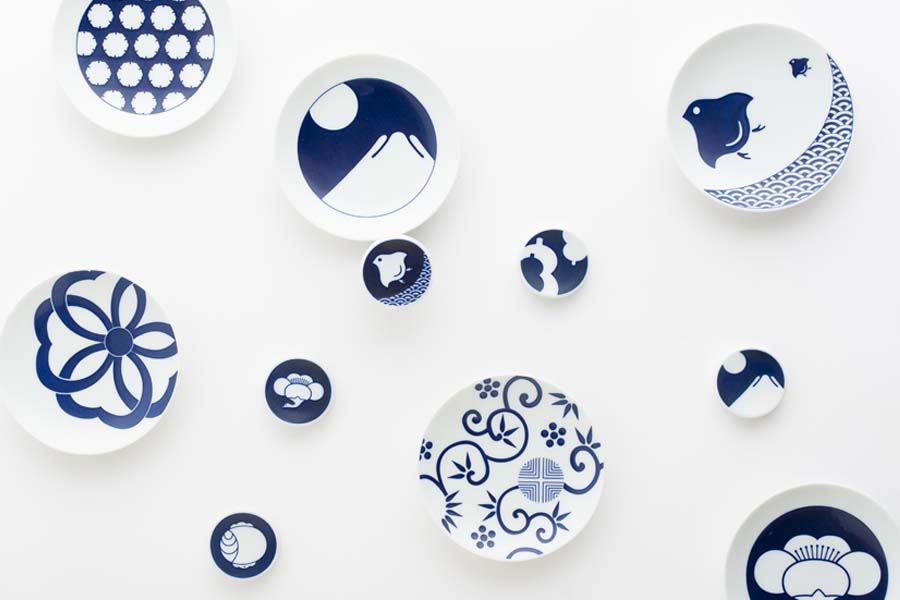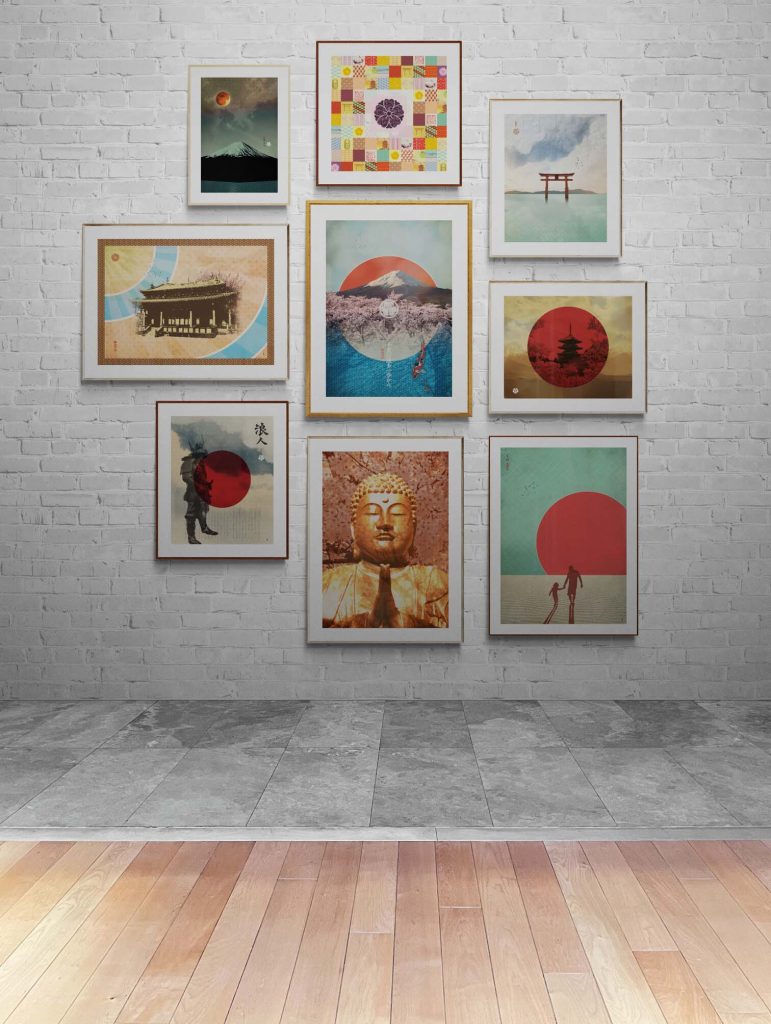Introduction
In the world of Japanese porcelain, Kihara stands as a symbol of innovation and reverence for tradition. Among their exceptional collections, the Kihara Komon series has gained widespread acclaim for its exquisite craftsmanship and contemporary design. This article delves into the attributes of the Kihara Komon collection and explores how it bridges the gap between Japanese artistry and modern living.

The Essence of Kihara Komon
The Kihara Komon collection is a celebration of Japanese culture and design, paying homage to the country’s rich history and traditional aesthetics. “Komon” refers to the family crests in Japanese culture, which are used to symbolize one’s lineage. Kihara has taken this age-old concept and reimagined it in a contemporary context, transforming these crests into pieces of art that can grace any modern home.
Attributes of the Komon Collection by Kihara:
Elegance
The Komon collection by Kihara exudes elegance through its sophisticated and timeless designs. The artisans craft each piece with precision and attention to detail, reflecting the rich cultural heritage of Japan.
Intricate Patterns
The collection features a wide range of intricate and traditional Japanese patterns that draw inspiration from historic family crests. These patterns include geometric shapes, flora, fauna, and abstract designs.
Versatility
Kihara’s Komon collection includes various pieces, making it versatile for different purposes. The Mamezara (small plates) from Kihara measure 10.8 cm (4.25 in) in diameter and can serve as containers for soy sauce or condiments. The Torizara plates are larger, with a diameter of 15 cm (5.9 in), making them suitable for use as dessert plates.But all of these plates also look brilliant as a display of Japanese art.
Gifts
People frequently give mamezara plates as gifts in Japan due to their aesthetic appeal and collectible nature.
Quality Craftsmanship
Kihara, known for its commitment to craftsmanship, and the Kamon collection exemplifies this dedication. Carefully made from Atria Porcelain, each piece meets the brand’s high standards.
Details of the Kihara Komon plates collection
The Kihara Komon Japanese Art plate collection comes in 3 different sets. Two Mamezara sets and one Torizara set.

Kisetsu-mon Japanese Small Plates
The Kisetsu-mon set of 5 Japanese small plates (Mamezara) is based on seasonal patterns: Umeduru, Maromon-Nami, Inaho, Fuji, and Yukiwa.
Umeduru is a combination of Ume (Japanese Plum) and Tsuru (Jpanese) crane — taken together to mean the welcoming of the spring.
Maromon-Nami, derived from the ebb and flow of waves, which symbolizes the arrival of happiness one after another and the welcoming of summer.
Inaho, derived from the ear of rice is a symbol of fertility and represents the fall season.
Yukiwa is a based on an traditional Japanese pattern (wagara) of the snow flakes and represents winter.
Fuji represents the revered and iconic Mount Fuji in Japan. At the Art of Zen we have produced a series of original Mount Fuji wall art.

Kissho-mon Japanese Small Plates
The Kissho-mon set of 5 Japanese small plates are intended to bring good luck and happiness.
Sho-Chiku-Bai is taken from the deisgns of a Sho (pine tree), Chiku (bamboo) and Bai (plum). Together they signify vitality, prosperity, and long life.
Hyoutan is based on the fruit gourd and is meant for future prosperity.
Kotobuki-mon is a collection of “auspicious patters” which also relay the messages of youth, long life, and prosperity.
Musubi-Zakura is a pattern designed Sakura (cherry blossom) and its message is eternal happiness.
Nami-Chidori is a combination of the Japanese word for “wave” and “bird” and together they signify good fortune.

Torizara Japanese Medium Plates
This set of Torizara plates come in 5 different traditional Japanese patterns (wagara).
Shippo is a pattern created from overlapping and contrasting circles. It represents wealth and harmony.
Anime is a pattern that resembles a chainlink fence or wavy lines which intersect at the peaks and troughs. It represents good fortune.
Asanoha is one of the most recognizable Japanese patterns based on a hemp leaf and represents good health.
Yabane, a pattern based on the arrowhead, serves the purpose of averting evil.
Seigaiha is a pattern based on concentric circles and resembles the waves of the sea. It represents peace.
What is Mamezara?
Mamezara, a term in Japanese, literally translates to “bean plate” or “miniature plate.” These are tiny, often colorful, ceramic or porcelain plates, typically measuring around 3-4 inches (7-10 cm) in diameter. They are designed for serving small portions, such as a single bean, a small piece of food, or condiments.
Japanese culture cherishes mamezara plates for various purposes:
Ceremonial Use
In traditional tea ceremonies like chanoyu, people use mamezara plates to serve sweets, reflecting the meticulous and highly ritualistic nature of the ceremony.
Decorative and Collectible
Mamezara plates often feature intricate designs, patterns, and motifs, making them collectible items for enthusiasts of Japanese ceramics and porcelain. These small plates may feature traditional Japanese patterns, seasonal themes, or artistic designs.
Condiments and Spices
In contemporary settings, people use mamezara plates to hold condiments, spices, and garnishes. They add a touch of elegance to dining tables and are ideal for presenting small amounts of soy sauce, wasabi, or pickled vegetables.
Gifts
Because of their aesthetic appeal and collectible nature, people frequently give mamezara plates as gifts in Japan.
Artistic Expression
Many artisans and pottery makers use mamezara as a canvas for artistic expression. These small plates can feature hand-painted designs, calligraphy, and other decorative elements.
Mamezara are an excellent example of how Japanese culture pays attention to detail and aesthetic refinement, even in the smallest aspects of daily life. Their diminutive size and attention to design make them both functional and artistic objects that hold a special place in Japanese culinary and decorative traditions.
What is Atria Porcelain?
Arita porcelain, also known as Arita ware or Arita-yaki, garners high regard for its quality, craftsmanship, and historical significance in Japanese porcelain production. The town of Atria is located in the Saga Prefecture of Japan, and it is the birthplace of Japanese porcelain. Furthermore, the porcelain holds a rich heritage dating back to the early 17th century when the region established its first kiln.
Attributes of Atria porcelain include quality materials, lightweight, variety of design, durability and manufacturing utilizing traditional techniques.
The connection between Arita porcelain and the Kamon collection by Kihara lies in their shared commitment to tradition, craftsmanship, and artistic expression. Arita porcelain celebrates its historical significance and pioneers Japanese porcelain production. The Kamon collection by Kihara, inspired by family crests, reflects a long-standing tradition in Japanese culture.

Conclusion
The Kamon collection by Kihara is a testament to the enduring connection between traditional Japanese art and contemporary design. It pays homage to Japan’s rich artistic history by featuring family crest motifs, which have been a fundamental part of Japanese art and identity for generations. Furthermore, these crests often carry deep symbolic meanings and can be traced back to samurai culture, where they were worn as symbols of honor and identity.
Each piece in the Kamon collection showcases the fusion of traditional Japanese aesthetics with modern design sensibilities. Kihara’s approach highlights the adaptability of Japanese art, demonstrating how traditional elements can seamlessly integrate into contemporary lifestyles. These pieces are not just functional; they are also artistic expressions that embody the essence of Japanese culture.
Read more:
- Exploring the Captivating World of Traditional Japanese Patterns: Wagara
- Zen-Inspired Minimalism: Finding Harmony in Simplicity
- Embracing Wabi-Sabi in Interior Design and Art

At the Art of Zen we have a wide selection of original Japanese style art prints in the ukiyo-e and Japandi style . Add some zen to your space with some art from the Art of Zen shop.
Images courtesy of the Japan Design Store, Kihara, and Kogei Gallery.




0 Comments